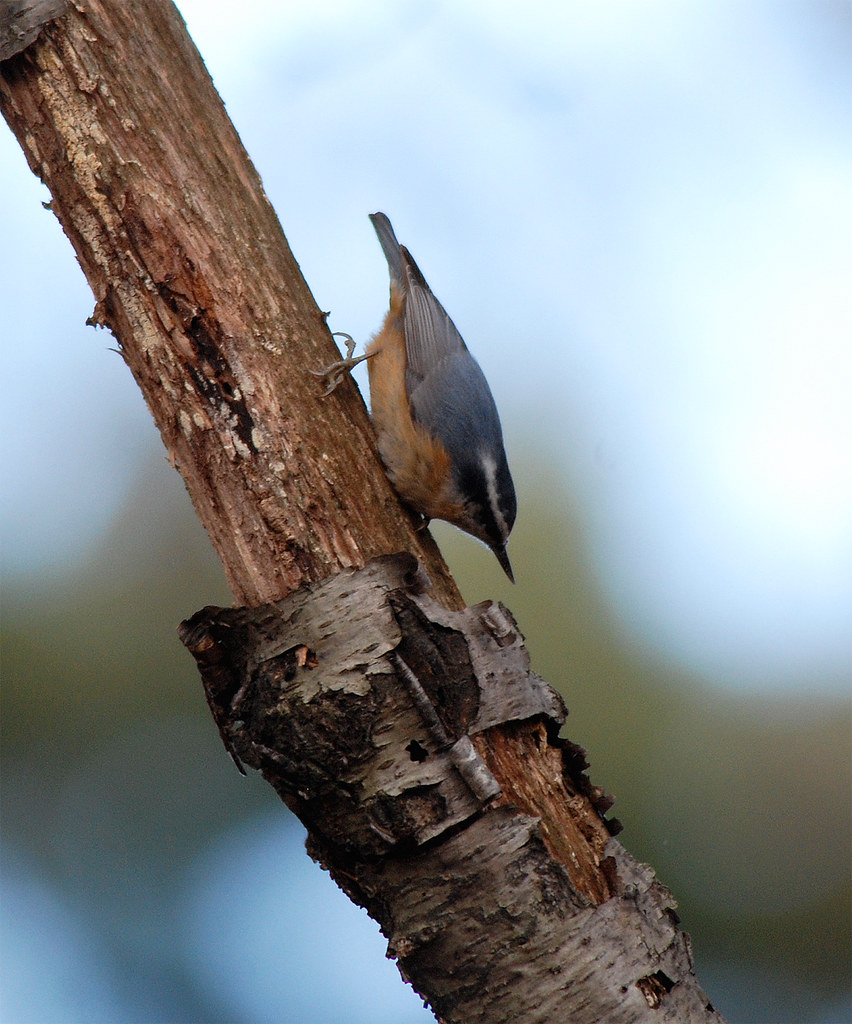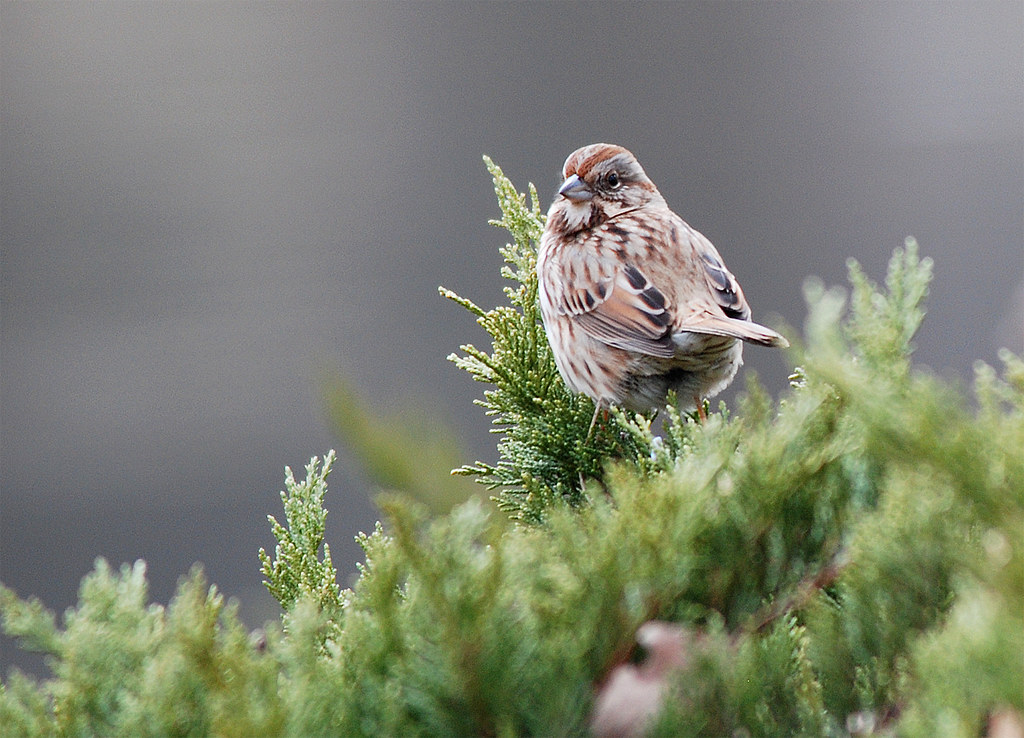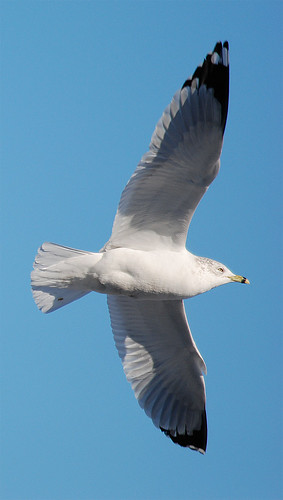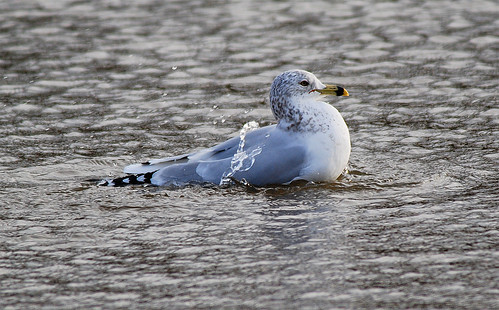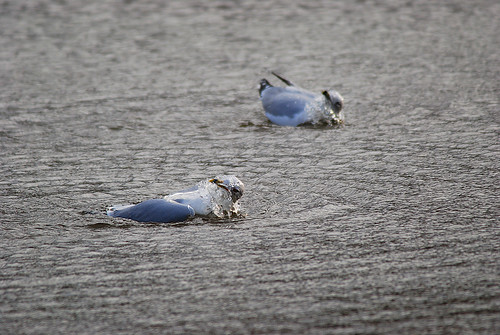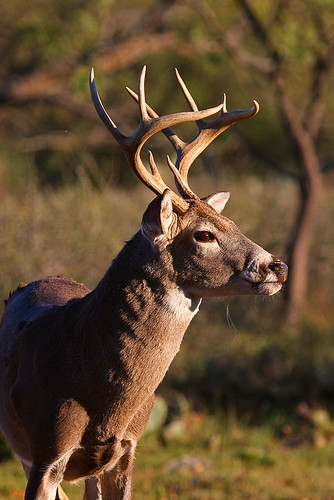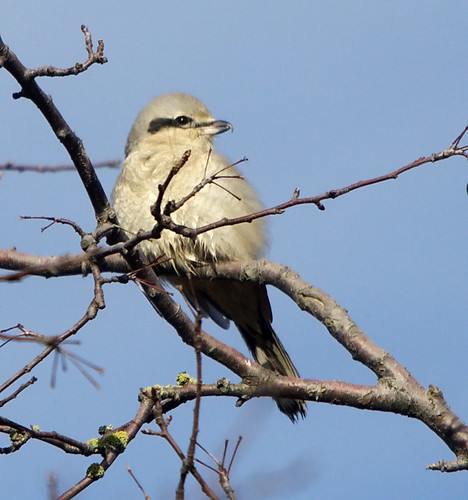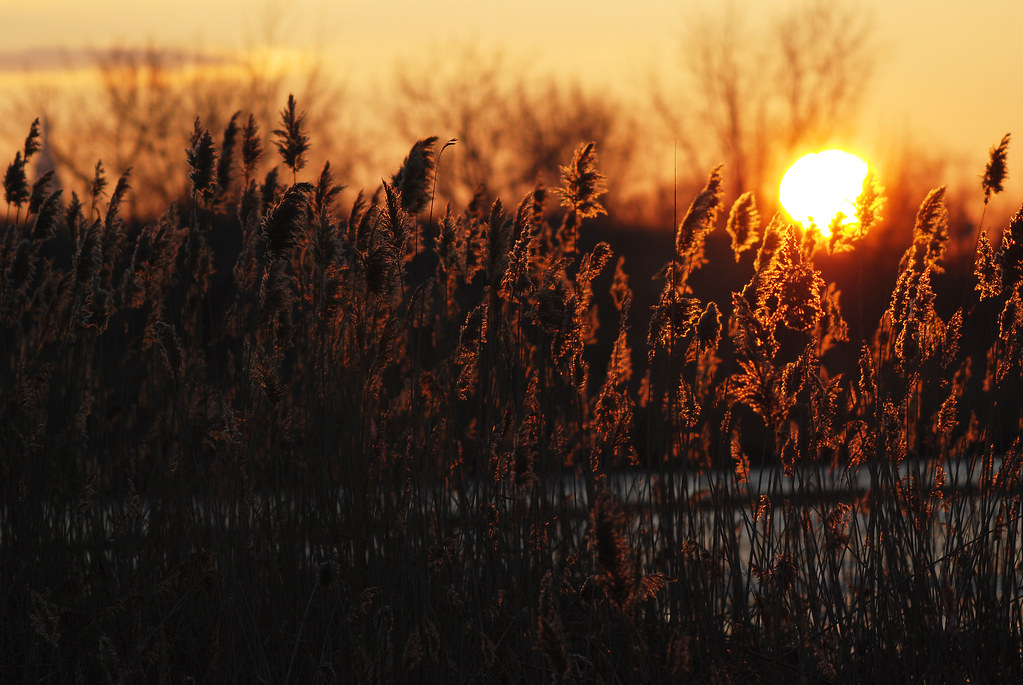 Soaking in the first bit of morning light, we started down the Saw Mill Creek Path from Disposal Road. It wasn't long before we heard an odd sound coming from just up ahead. Soon enough we located the silhouette of a bird perched on one of the high tension wire bases. As it turned its head, we could make out the hooked beak and knew it was going to be a good morning.
Soaking in the first bit of morning light, we started down the Saw Mill Creek Path from Disposal Road. It wasn't long before we heard an odd sound coming from just up ahead. Soon enough we located the silhouette of a bird perched on one of the high tension wire bases. As it turned its head, we could make out the hooked beak and knew it was going to be a good morning.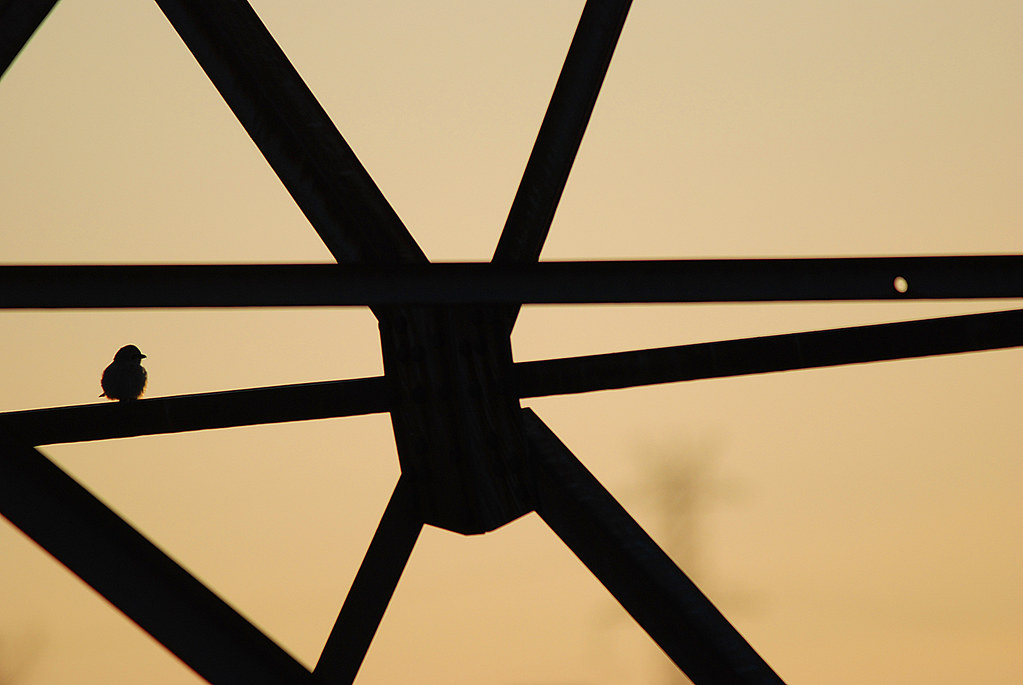
We made our way slowly down the trail and put the sun to our backs. And there it was - the Northern Shrike, sitting and singing calmly next to a high voltage sign. As are many of my birding experiences in the Meadowlands, the entire thing was a bit surreal. With huge jumbo jets flying overhead, sirens going off in every conceivable direction, and the New York City skyline just behind us...this little predatory powerhouse didn't seem to be out of his element at all. The shrike sat and soaked up the sun as we watched and listened to him vocalize for about 20 minutes. You can hear a brief clip of a Northern Shrike at Cornell's All About Birds site. The last note in the clip is what this particularly individual was doing for most of the time we observed him, so it was a bit more attractive than the recording in the link.
 Unfortunately a dog was walked by and the bird headed for the hills. He perched briefly at the very top of a tree (classic shrike behavior), and then dove down into some Phragmites.
Unfortunately a dog was walked by and the bird headed for the hills. He perched briefly at the very top of a tree (classic shrike behavior), and then dove down into some Phragmites.
With our fingers crossed for another meeting later that day, we continued down the path in the direction of the New Jersey Turnpike. A few Northern Harriers hunted across the water over the landfill, and a Red-Tailed Hawk flew overhead. The ducks were the real non-shrike stars of the day, though. On the first leg of the trail Northern Pintail were plentiful. These are extremely handsome ducks, and one drake even hung around the edge of the trail long enough for me to get some relatively up-close photos of him in the morning light.
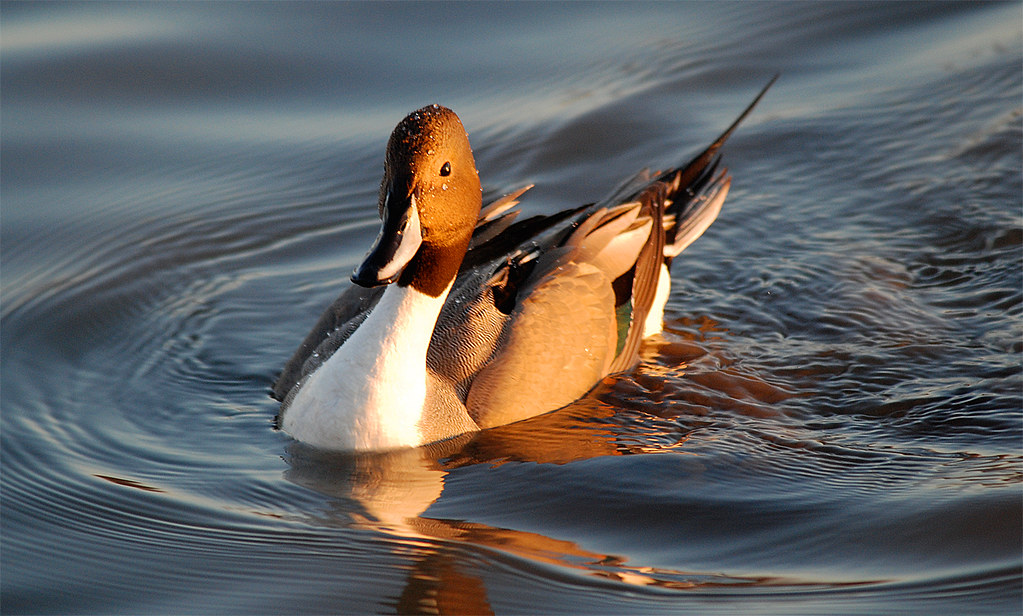
Mallards and Black Ducks were abundant as well, and we eventually found a hybrid cross between the two. These crosses are becoming increasingly common, and can be picked out of a flock by their wigeon-like green face patches. A male is pictured below, showing that tell-tale mallard coloration in the head.
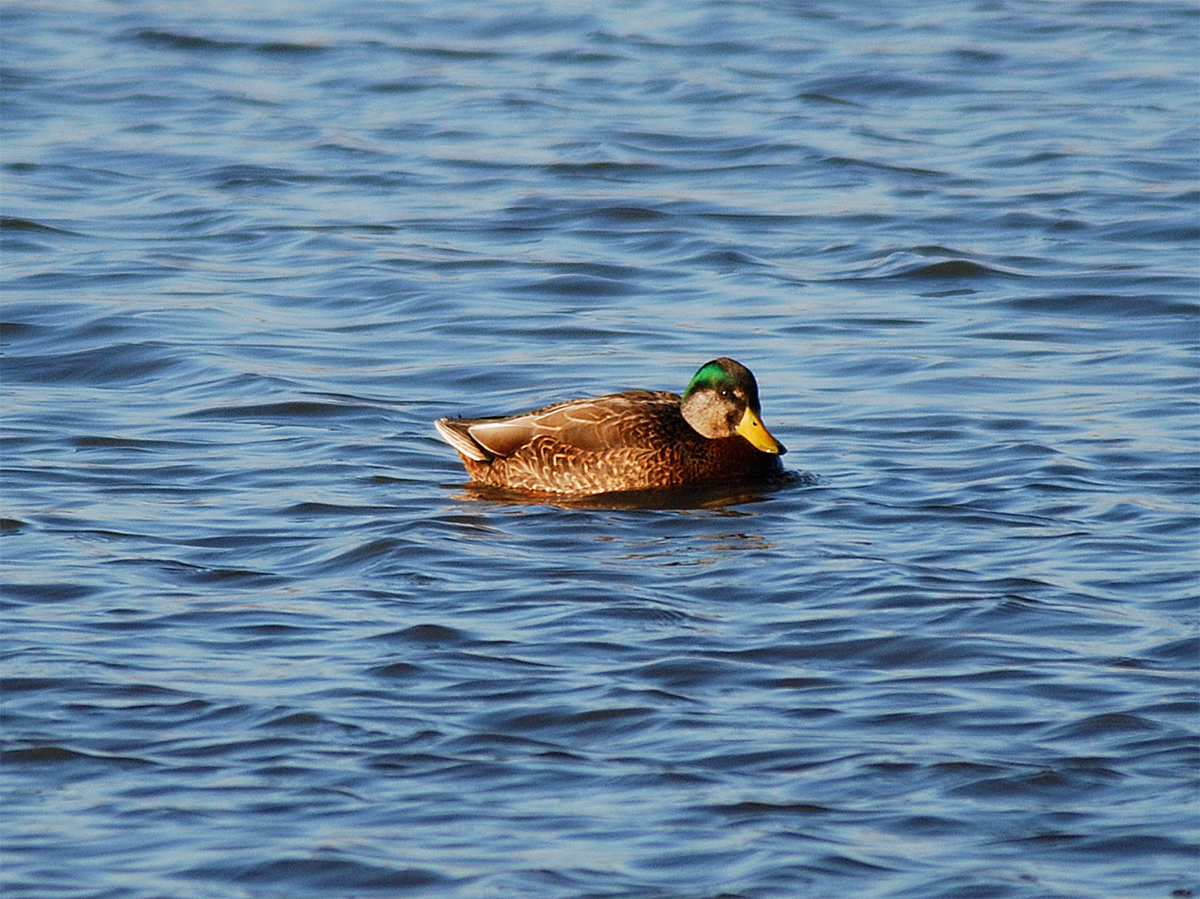
As we continued walking more and more duck species started popping up. Northern Shoveler and Green-Winged Teal were hanging out on the far shore, and Buffleheads occasionally flew by before splashing down and resuming their diving.
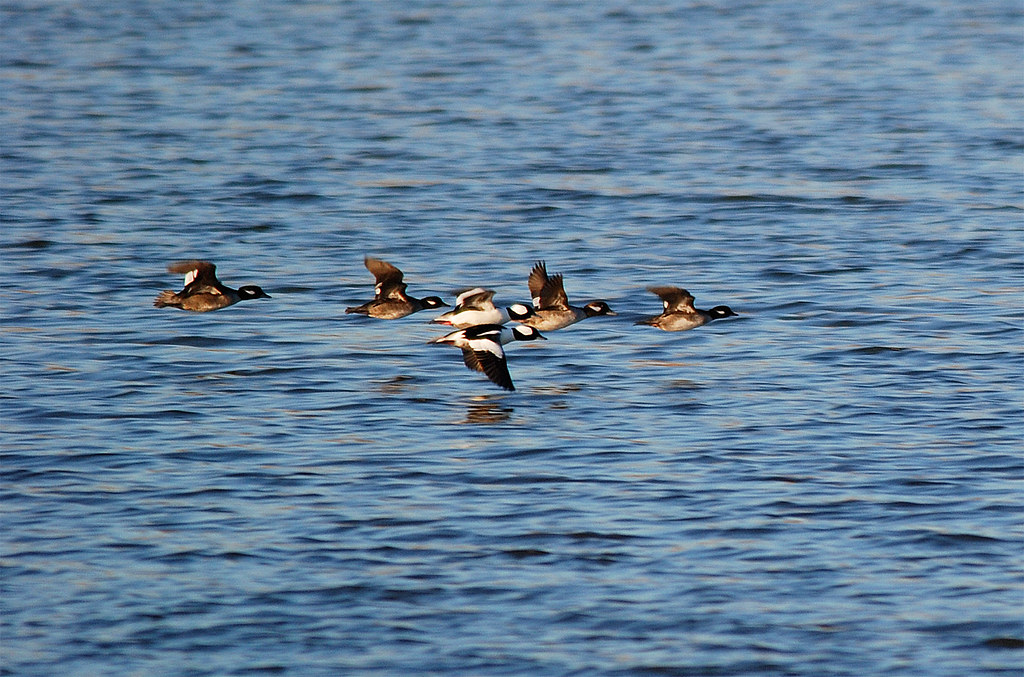
A few Ring-Necked Ducks were also enjoying the favorable weather, along with a female Common Goldeneye.
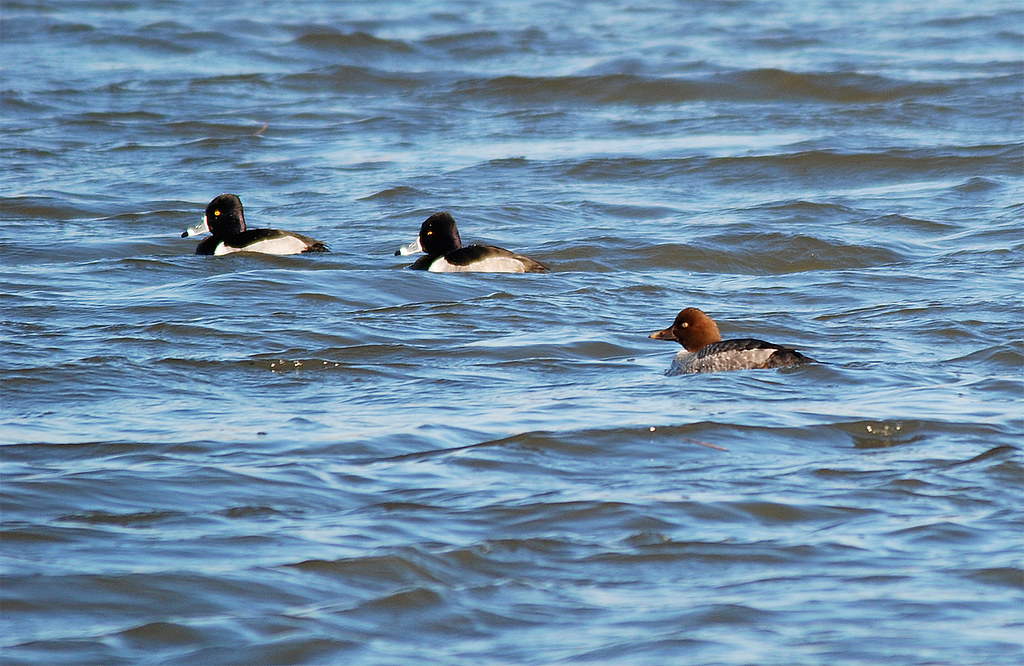
Common Mergansers flew back and forth across the water, and a few Hooded Mergansers were hanging around toward the end of the trail. We headed back the way we came, but instead turned right, toward the Meadowlands Commission building. After spotting a Ruby-Crowned Kinglet, a Double-Crested Cormorant, and some Red-Winged Blackbirds, we started down another leg of the path to get a closer look at an enormous raft of Canvasback. The dozen or so pictured below were only a fraction of the more than 225 individuals! As we passed them, more and more birds kept flying in and joining the flock.

We also passed these Pintail on the way back, seemingly on their way to a double date.

Gadwall ended up being our 12th species of duck for the day, a fairly exciting total! We were on the lookout for Ruddy Duck and Red-Breasted Merganser, but couldn't extend the count beyond a dozen. Here's a quick rundown again of the ducks we ended up seeing:
Mallard
Black Duck
Green-Winged Teal
Northern Shoveler
Northern Pintail
Canvasback
Hooded Merganser
Common Merganser
Bufflehead
Common Goldeneye
Ring-Necked Duck
Gadwall

As we turned the last corner before reaching the parking lot, something flew across the water and perched on some marsh elder near the osprey platform. After a quick inspection we realized our friend the Northern Shrike and come out for Act 2. He changed perches a few times, until settling in directly in front of the Empire State Building (pictured below). Another surreal sight.

Eventually a jogger came a bit too close and the Northern Shrike shot down into the brush. We searched a bit but realized he had probably exited out of the back of the trail and across the water. We headed back toward the car and called it a morning.
Northern Shrike and twelve ducks?! That's one heck of a way to start a Wednesday!
